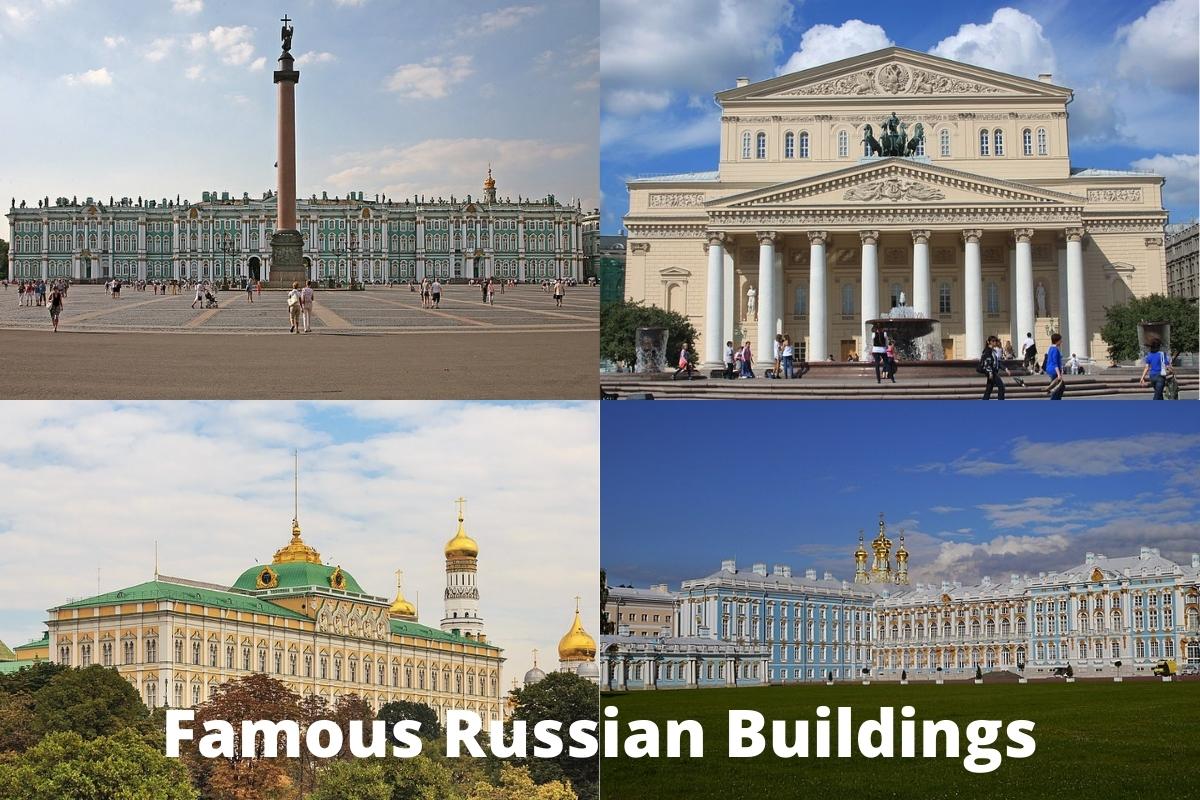Russian architecture is among the most distinct of any style in the world and it is one that is particularly of interest to those who are interested in how the architectural building styles are typically connected with various religious or political movements.
Some of the most prominent influences in Russia’s historic buildings are Slavic in nature, but there are also Easter Roman style architectural works as well.
In this article, we will examine 10 of the most famous Russian buildings and also discuss more details regarding the architects credited with their design and some brief historical details as well.
Famous Russian Buildings
1. St. Basil’s Cathedral
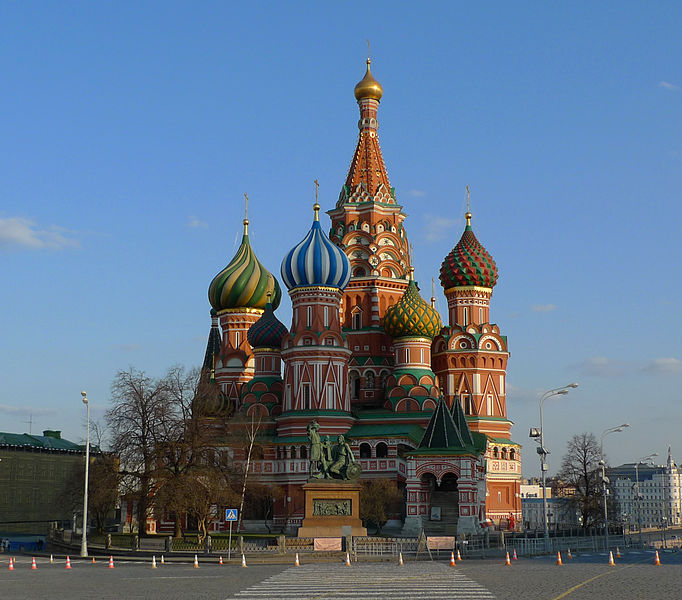
There is no other building in Russia that is more iconic and culturally-indicative than St. Basil’s Cathedral. This large, spectacular structure is located in the city of Moscow’s famous Red Square and was originally constructed to serve as a church during the mid-16th century.
The cathedral was designed by Ivan Barma and Postnik Yakovlev, who are regarded as some of the greatest Russian architects in history and are known to have designed and constructed many other prominent buildings across the country.
St. Basil’s Cathedral is known for its unique design that includes very colorful and lively patterns which decorate each one of the towers that stand in various parts of the church.
Construction on this building started in 1555 and it would take just a few years before it was completed in 1561 under the rule of Ivan IV Vasilyevich, who is more commonly known throughout history as “Ivan the Terrible.”
It stood for a short while as the tallest building in Moscow, but later became more famous for its vibrant array of colors that are masterfully laid out across the various towers and mosaic-style patterns both inside and outside of the cathedral.
St. Basil’s Cathedral was confiscated from the church in the years after the Bolshevik Revolution which saw millions of Russians murdered and state atheist enforced throughout the land.
2. Bolshoi Theatre
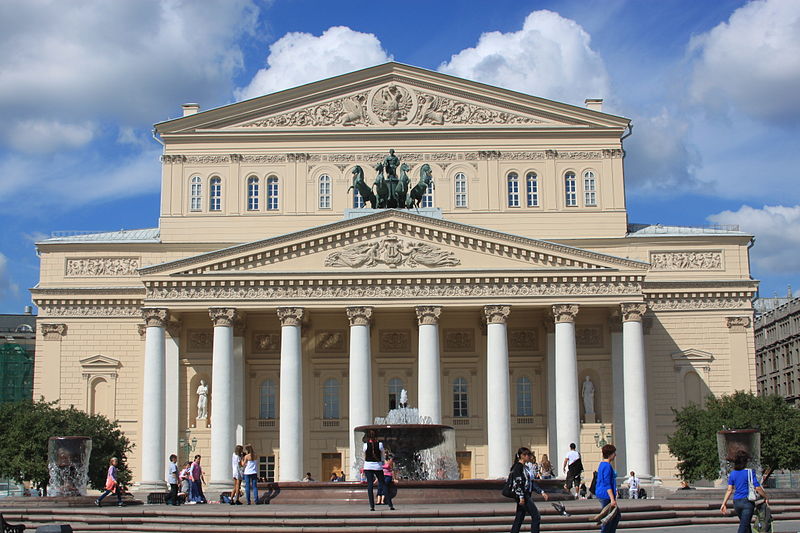
The well-known Bolshoi Theatre is not necessarily one of the largest buildings, or the largest theatres in Russia, yet it is a building that has become a notable Russian landmark over the years since it was established.
Located near the middle of the city of Moscow, the Bolshoi Theatre is a structure that’s mostly devoted to ballet and theatrical performances. Russia, which is known for having an especially rich cultural tradition of ballet, boasts the Bolshoi Theatre as one of the largest ballet theatres and companies in the world.
The Bolshoi Theatre was designed by famous Russian architect, Joseph Bové, who was known to be one of the most notable neoclassical designers in history. The Bolshoi Theatre was built on what was formerly known as the Petrovka Theatre, which was constructed during the early 18th century.
Once the Bolshoi Theatre Company had been established, the theatre was purchased and renovated in order to host ballet performances.
The theatre’s overall design remained largely the same, offering a front facade that was complete with Greek-style columns and a large vaulted ceiling.
The Petrovka Theatre was destroyed by a massive fire in 1805 and the Bolshoi Theatre was built in its place using a very similar overall design and style as the original structure.
3. Cathedral of Christ the Saviour
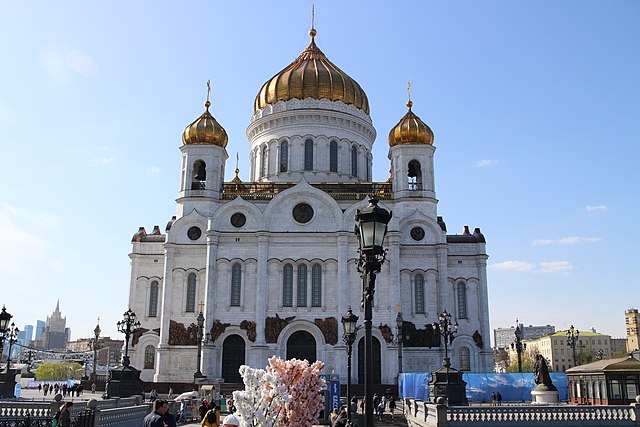
There are numerous churches scattered throughout Russia that display the handiwork of some of the nation’s most well-known architects. One of these buildings is known as the Cathedral of Christ the Saviour, which is located in the middle of Moscow, not far from the Bolshoi Theatre.
It was the first finished architectural project of Aleksandr Lavrentyevich Vitberg, who is highly-regarded as one of the most celebrated Russian architects in history.
The Cathedral of Christ the Saviour is a structure that was in the design phases during the early part of the 19th century. Once the project was approved and endorsed by the Tsar in 1817, construction began and it would take a few more decades before the powers that be and the architects settled on a specific site to build the Cathedral of Christ the Saviour.
After the structure was completed, it was badly burned in a fire in the early 20th century before the church was rebuilt. Today, it is considered to be the gem of Moscow and its glistening gold-capped towers and snow-white facade are enough to catch the eye of any passer-by.
4. Kremlin

One of the longest-standing Russian military structures in the country is located in the heart of Moscow near most of the other state buildings at the nation’s capital.
The Kremlin is regarded as one of the most prominent landmarks in the sprawling city and it stands as a testament to Russia’s culture of strength and fortitude against foreign invaders and threats.
The word “kremlin” translates to mean a ‘fortified structure’ and it has, in the last few decades, taken on an entirely new meaning for parts of the English-speaking world ever since the Kremlin stood as a Cold War adversary to much of the western nations’ ideology.
The building itself is located in the Red Square and is built on the site of an ancient stronghold that dates back to the 2nd century A.D., according to historians.
The State Kremlin Palace, as it is known today, is just one wing of the labyrinth of interconnected structures that make up the country of Russia’s military headquarters.
5. Ostankino Tower
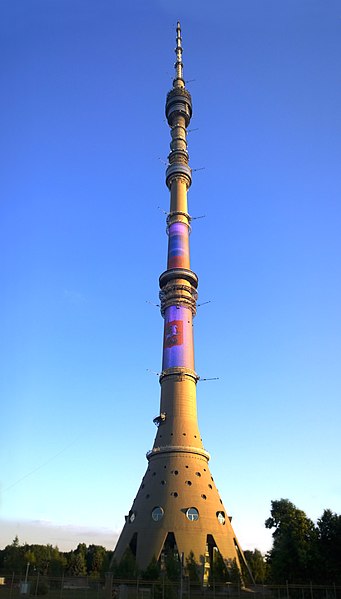
There are various towers throughout Russia and some of the country’s most popular buildings are built with tall, domineering towers that make them stand out from many other surrounding structures.
It is the Ostankino Tower that is perhaps one of the most famous Russian landmark that stands as a single tower, however. The structure is located in the northern portion of Moscow and is a massive, red-colored tower that has since become a well-known symbol of Russia and the city of Moscow itself.
The Ostankino Tower is currently the 11th tallest tower in the world and is actually the tallest free-standing structure in Europe. It features various rings or platforms that are designed in such a way as to make it appear much like some of the other towers that are established throughout Moscow today.
Built in 1967, the Ostankino Tower is one of the more iconic buildings in Russia’s capital outside of St. Basil’s Cathedral and some of the other famous landmarks.
Although multiple fires and other events have caused significant damage to the structure, the Ostankino Tower still stands today and is one of the most visited destinations for tourists who travel to Moscow.
6. Winter Palace
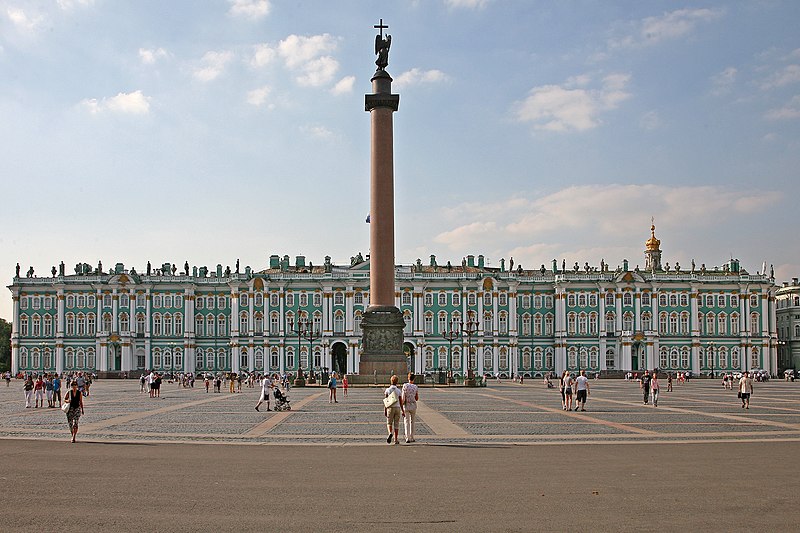
Saint Petersburg is a city that is world-famous for its monuments and stunning architecture. Among the historic city’s most famous buildings, the Winter Palace is arguably the most notable.
This massive, beautiful structure is one that is aesthetically unique and captivating to anyone who has the pleasure of visiting the site.
Built alongside the Neva River, the Winter Palace offers incredible works of architectural mastery both inside and out, as well as many individual works of art that are stored inside. The interior of the massive palace is filled with different halls and various rooms that are dedicated to specific purposes.
Each of these halls are lavishly-decorated and have served various members of royal families throughout the centuries since it was originally constructed in 1711 as Peter the Great’s Winter Palace.
This palace boasts more than 1,500 rooms and some of the interior parts are among the most historic and architecturally impressive of any structure in Russia.
7. Catherine Palace
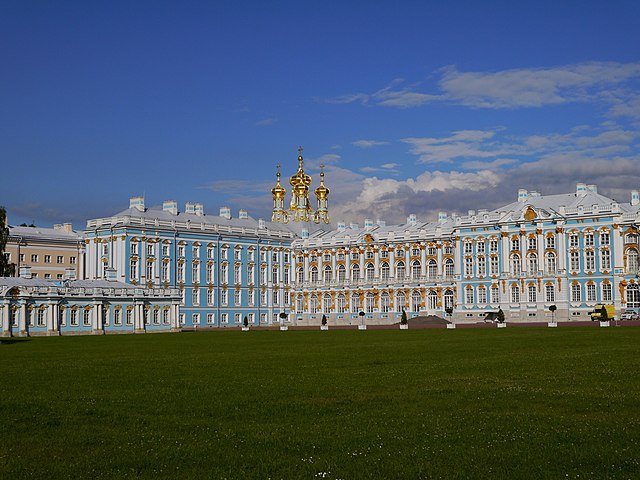
Located nearly 30 miles south of Saint Petersburg, Russia is the Catherine Palace, which is arguably as impressive in many ways as the famous Winter Palace. It was built in 1717 by the famous German Johann Friedrich Braunstein and was originally intended to serve as the main residence for Empress Catherine I.
Over the centuries, the Catherine Palace has served as a home for many different tsars and other rulers throughout Russia’s history.
The architectural style of the palace is mostly according to the Rococo style, which favored lavish borders and heavily-embellished patterns that were commonplace across parts of Europe, mostly in the heavily-populated cities, throughout the 18th century.
It stands today with more than 8,600 square feet of space and includes many incredibly-decorated and designed halls and chambers that were clearly meant for royalty. Today, the Catherine Palace is recognized as part of the World Heritage Site of Saint Petersburg and Related Groups of Monuments.
8. Hermitage Museum
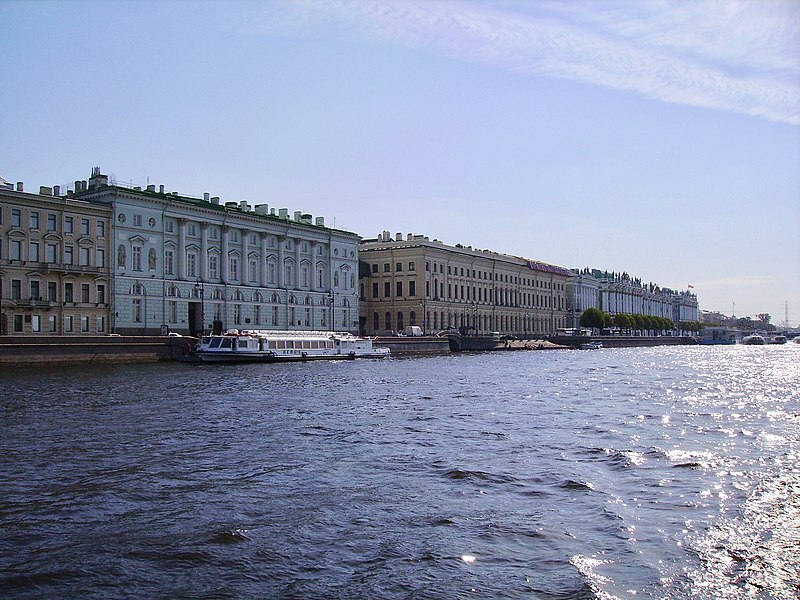
Another iconic buildings that we find situated along the banks of the Neva River is the Hermitage Museum. This vast structure stands today as a museum of art and culture, holding some of the most priceless paintings in Russia, as well as a number of works done by other artists.
It was established in 1764 as a royal museum where Catherine the Great held her favorite works of art, many of them were paintings she had acquired from Johann Ernst Gotzkowsky.
The building was officially opened to the public roughly a century after its construction and it is now one of the most visited art museums in the nation of Russia, as well as the world.
The Hermitage Museum’s complex sits alongside the Neva River adjacent to the Winter Palace and the Hermitage Theatre.
In the centuries since it was opened to the public, the Hermitage Museum has featured collections of art from some of the world’s greatest painters, sculptors and other artists.
It is a massive building that features more than 700,000 square feet of space which contains more than 3 million pieces of individual artwork.
9. Peterhof Palace
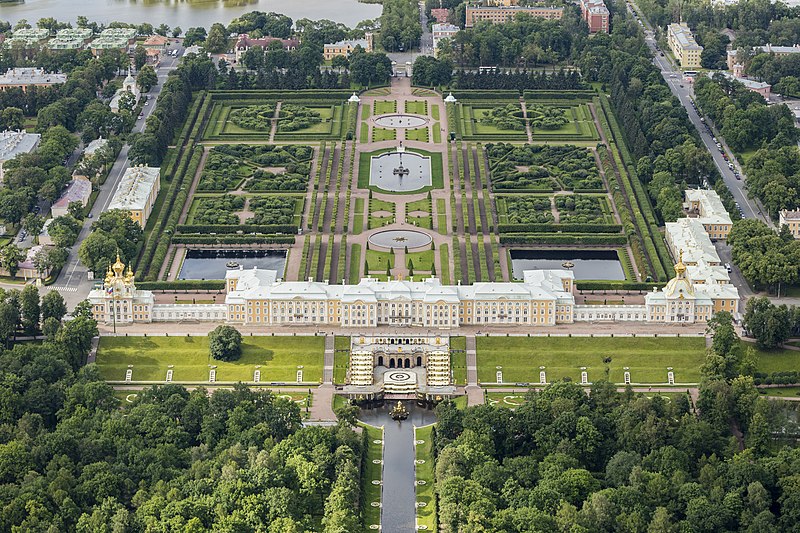
One of the most lavishly-decorated architectural masterpieces in Russia is another building that’s centered in Saint Petersburg.
Known as the Peterhof Palace, this massive building offers a beautiful garden and court and was initially constructed to serve as a retreat for members of the royal family and tsars that ruled over Russia during the 18th and 19th centuries.
Construction on the Peterhof Palace began during the early 1700’s when Peter the Great had begun constructing a new capital city in what is now Saint Petersburg, Russia.
The immense palace features a number of visually stunning sections that include The Grand Cascade and Samson Fountain, as well as the Lower Gardens and the Grand Palace itself.
All of these are incredibly decorated according to the Baroque style or that which was typically found in French royal gardens during this time period. The Peterhof Palace is nearly 1.5 million square feet in its entirety and is easily one of the most grandiose buildings that is still standing today.
10. Grand Kremlin Palace
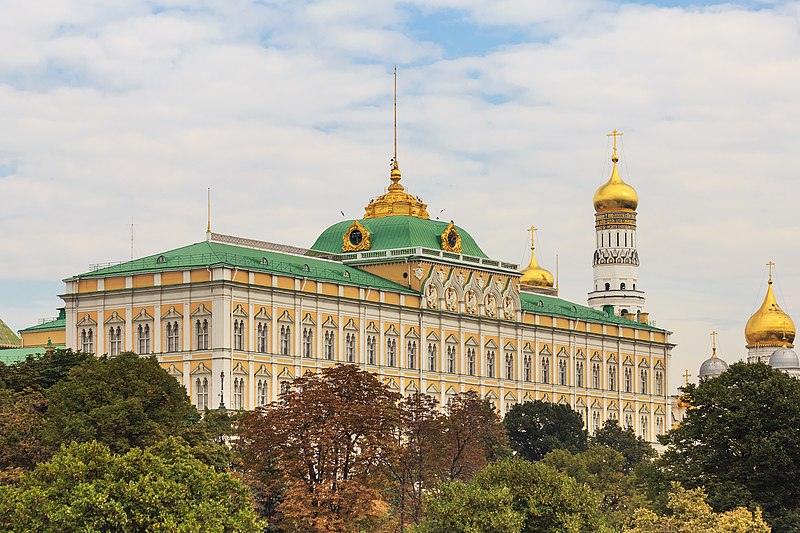
As we have already mentioned above in relation to the Kremlin, the Grand Kremlin Palace is another very popular building in Russia today.
It is one of most famous buildings in Moscow and sits very near to the banks of the Moskva River, which winds its way through the capital city of Russia.
This immaculate building was designed and built by Konstantin Andreyevich Thon, who is also recognized as one of the most prominent architects in Russia’s history and is often fondly-referred to simply as Ton or Thon.
The Grand Kremlin Palace was built on a site that was meant to be the estate of the Grand Princes. This building was crafted according to the Baroque style in many ways, both in regards to its interior and exterior.
Its massive sprawling interior features nearly 270,000 square feet of space that is filled with numerous pieces of priceless artwork, historical items and various other pieces of Russian history.
The much older original structure that was known as the Terem Palace is still very much intact and the Grand Kremlin Palace includes many halls and wings meant for banquets, as well as 700 individual rooms across the entire palace.

